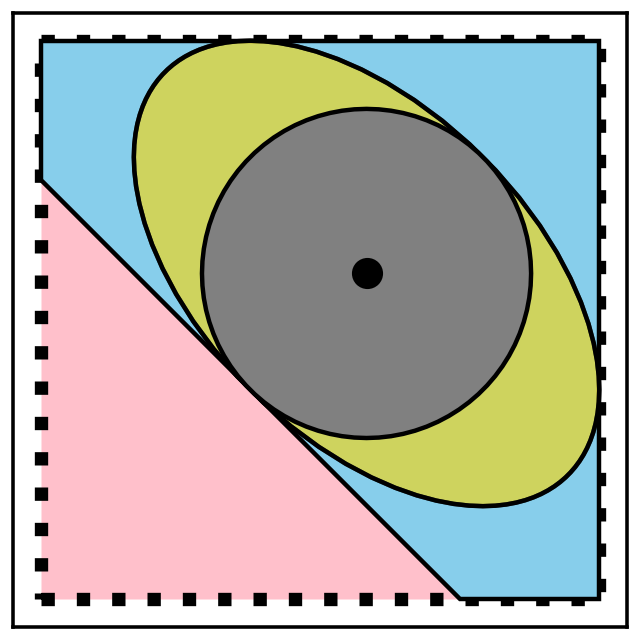pycvxset.common.spread_points_on_a_unit_sphere¶
- pycvxset.common.spread_points_on_a_unit_sphere(n_dim, n_points=None, cvxpy_socp_args=None, verbose=False)[source]¶
Spread points on a unit sphere in n-dimensional space.
- Parameters:
n_dim (int) – The dimension of the sphere.
n_points (int) – The number of points to be spread on the unit sphere. Defaults to None, in which case, we choose
= (n_points)
cvxpy_socp_args (dict) – Additional arguments to be passed to the CVXPY solver. Defaults to None, in which case the function uses DEFAULT_CVXPY_ARGS_SOCP from pycvxset.common.constants.
verbose (bool, optional) – Whether to print verbose output. Defaults to False.
- Returns:
- A tuple containing three items:
# opt_locations (ndarray): The spread points on the unit sphere. # minimum_separation (float): The minimum separation between the points. # opt_locations_first_quad (ndarray): The spread points in the first quadrant.
- Return type:
tuple
- Raises:
ValueError – If n_points is less than 2 * n_dim.
UserWarning – If n_points - 2 * n_dim is not a multiple of 2^n_dim.
NotImplementedError – Unable to solve the convexified problem using CVXPY
NotImplementedError – Convex-concave procedure did not converge!
Notes
This function uses the CVXPY library to solve a convex optimization problem to spread the points on the unit sphere. The spread points are returned as opt_locations, the separation between the points is returned as separation, and the spread points in the first quadrant are returned as opt_locations_first_quad.
For n_dim in [1, 2], the points are available in closed-form. For n_dim >= 3, we solve the following non-convex optimization problem using convex-concave procedure:
\[\begin{split}\begin{array}{rlrl} \text{maximize} &\quad R \\ \text{subject to} &\quad R \geq 0\\ &\quad x \geq R/2\\ &\quad \|x_i - x_j\| \geq R, && 1 \leq i < j \leq n_\text{points}\\ &\quad \|x_i - e_j\| \geq R, && 1 \leq i \leq n_\text{points}, 1 \leq j \leq n_\text{dim}\\ &\quad \|x_i \| \leq 1, && 1 \leq i \leq n_\text{points}\\ &\quad \|x_i \| \geq 0.8, && 1 \leq i \leq n_\text{points}\\ \end{array}\end{split}\]The optimization problem seeks to spread points (apart from the standard axes) in the first quadrant so that their pairwise separation is maximized, while they have a norm close to 1. The second constraint is motivated to ensure that the reflections of the points about the quadrant plane is also separated by R.
